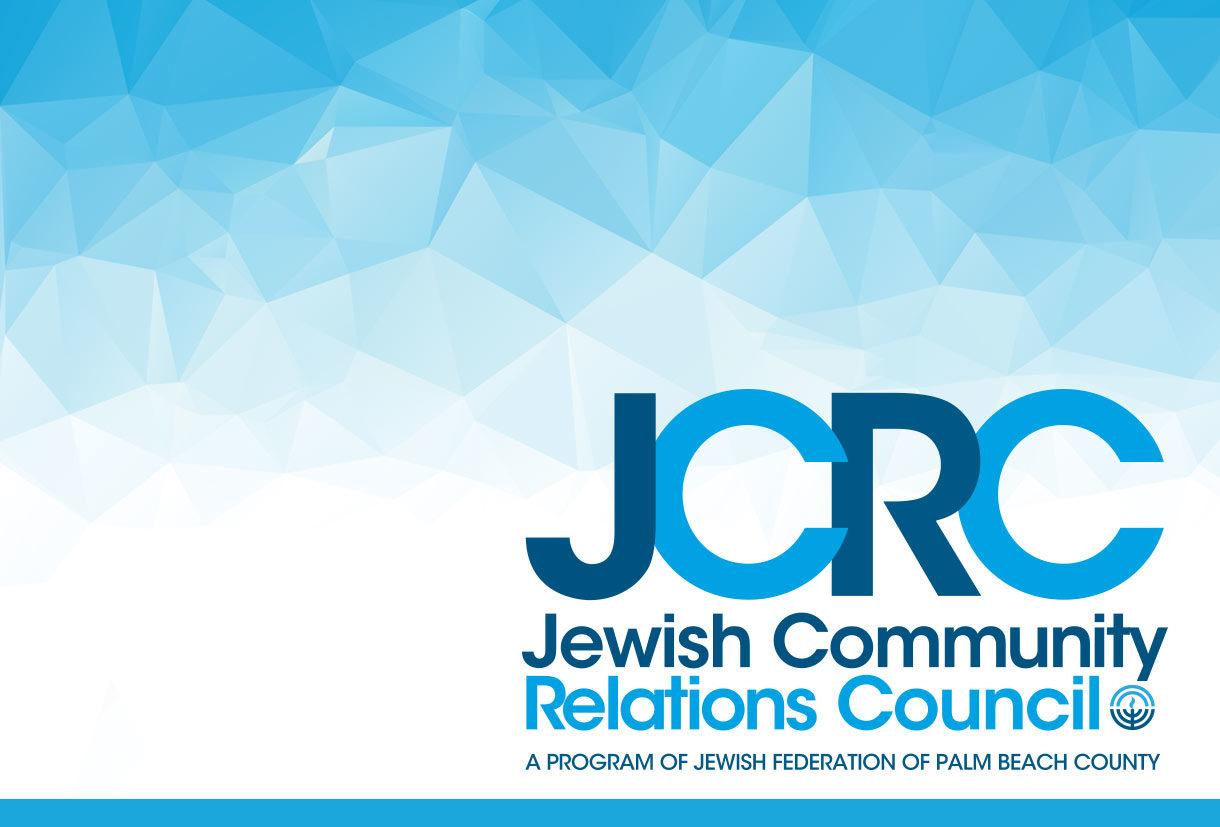EXPLAINING THE EXECUTIVE ORDER ON COMBATING ANTISEMITISM

Published December 24, 2019
On December 11, 2019, President Trump signed an Executive Order on Combating Anti-Semitism.
The Jewish Community Relations Council (JCRC) of the Jewish Federation of Palm Beach County and its national body, The Jewish Council for Public Affairs (JCPA) joins with the Jewish Federations of North America in the following statement in the wake of the new executive order regarding antisemitism:
The Jewish Federations of North America (JFNA) welcomes the new executive order, which adopts the International Holocaust Remembrance Alliance (IHRA) definition of anti-Semitism. The executive order is modeled on language in the Antisemitism Awareness Act, which has benefited from bipartisan support in the U.S. Congress and formalizes a definition of antisemitism that can be used in discrimination cases throughout federal agencies. It bolsters tools that help prevent discrimination on college campuses, which have been hard hit by a near 90% increase in anti-Semitic incidents over the past three years. It is deplorable that Jewish students continue to experience hate and hostility. These new tools are not inconsistent with first amendment protections, which we will continue to uphold and defend.
However, there’s been much confusion over what this executive order means both from a policy standpoint and over how the order defines Judaism. One of the roles of the JCRCs is to serve as an educational resource, so we aim to assist you in better understanding what the order means.
Why was the order necessary?
The order is intended to close a gap in the interpretation of Title VI of the Civil Rights Act of 1964. Title VI bars discrimination on the basis of “race, color or national origin” in programs that receive federal assistance, including educational institutions, but it does not protect against religious discrimination, thus excluding Jews. The executive order is intended to address this gap to protect Jews from antisemitism on campus by incorporating the International Holocaust Remembrance Alliance (IHRA) Working Definition of Antisemitism. This definition has been adopted by the U.S State Department, and more than 20 countries, government entities, US cities and states (Florida’s definition is based on this), and has been endorsed by others including the European Union and the U.N. Secretary General.
What is the IHRA definition?
The definition includes a basic definition of antisemitism and adds contemporary examples of antisemitism including as it pertains to Israel and Zionism.
What does the order do?
Specifically, the Executive Order asserts that “it shall be the policy of the executive Branch” to enforce Title VI of the Civil Rights Act of 1964, which prohibits discrimination in programs receiving federal funding, “against prohibited forms of discrimination rooted in anti-Semitism as vigorously as against all other forms of discrimination; prohibited by the statute.”
As the ADL states in its Frequently Asked Questions about the Executive Order: In a climate of rising anti-Semitism, this Executive Order provides valuable guidance on anti-Semitism, giving law enforcement and campus officials an additional tool to fight this pernicious hate.
As American Jewish Committee’s (AJC’s) David Harris said: “The situation for Jewish students is most worrisome,” AJC’s statement reads. “As AJC’s recent landmark survey on antisemitism in the U.S. shows, American Jewish young people are the age group most vulnerable to this hatred. Nearly half of those between the ages of 18 and 29 have been victims of antisemitic acts over the past five years, compared to just over a third of American Jews overall. More than a third of Jewish young people said they either had experienced antisemitism on an American college campus themselves or know someone who has. To date, though, responses to antisemitism on many campuses have often fallen short, leaving Jewish students vulnerable. Existing federal policy has not been fully enforced and today’s order merely gives Jews what other groups have long enjoyed—the right not to be subject to a hostile environment on campus.”
Also, the ADL’s Audit of Antisemitic Incidents has documented an 86 percent increase in reported incidents at colleges and universities – from 108 incidents in 2016 to 201 incidents in 2018.
The Executive Order will help the government determine what constitutes antisemitism and clarify when an anti-Israel incident crosses the line from protected free expression into harassing, unlawful or discriminatory conduct, because investigations would be informed by the current, widely accepted definition of antisemitism.
Does this violate First Amendment right to Free Speech?
It does not. It is important to note that there is nothing in either the IHRA Definition or the Executive Order that precludes anyone from criticizing the policies of the government of Israel. In fact, the IHRA definition explicitly states that “criticism of Israel similar to that leveled against any other country cannot be regarded as antisemitic.”
According to the ADL, “Under the order, criticism of Israel can be, and often is, protected speech, but the line must be drawn when such expression becomes intentional, unlawful, discriminatory intimidation and harassment against Jews.”
As David Harris of AJC said, “There is nothing inconsistent with protecting freedom of expression and providing Jews the same protections accorded other minorities.”
Does this executive order classify or label Jews as a race or nationality?
It does not classify Jews as a nationality nor a race. It identifies Jewish Americans as a protected class who, like other minority students on campus, should not be subjected to harassment, intimidation and discrimination.
Why is it being criticized?
Unfortunately, like everything else, it is political. It is also motivated by those who do not like the definition that explicitly states that the delegitimization of the Jewish State is unequivocally antisemitic.
Recommended articles:
The President’s Executive Order on Anti-Semitism: Frequently Asked Questions – ADL
The Executive Order That Defines and Combats Antisemitism Without Stifling Speech






